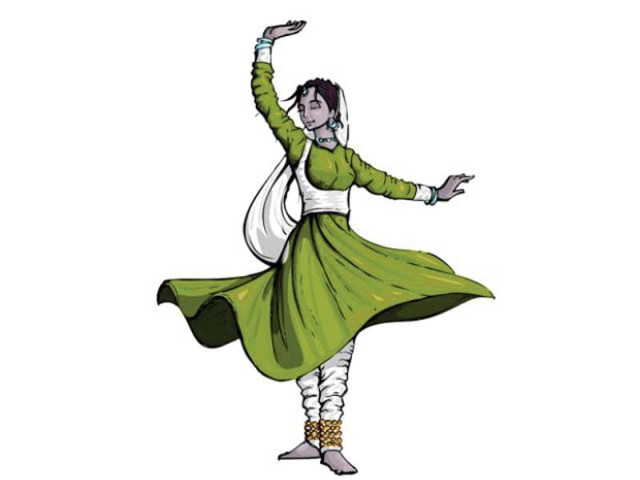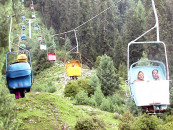How dancing queens lost their lustre
Once known for its community of dancers and singers, Rawalpindi’s Qasai Gali is now a place to purchase crockery

Once known for its community of dancers and singers, Rawalpindi’s Qasai Gali
is now a place to purchase crockery.
The animated sound of ghungroos has been replaced by the clatter of crockery in Rawalpindi’s Qasai Gali or Butcher’s Street.
Starting from the congested Raja Bazaar and ending at Talwara Bazaar, Qassai Gali was the city’s red-light district till a few decades ago. Today, the few remaining families of dancers are struggling to make a living. The women no longer sing and dance for visitors at their quarters. Instead they wait to be invited to weddings and other celebrations for the entertainment of guests.
Rawalpindi's red-light district: Old souls and worn dancing shoes
The homes of these last surviving families are old and dilapidated. Occupants of these abodes eagerly peer through their windows in the hopes of spotting a customer. But the only resemblance to the music of the past is the untamed racket of ceramic crockery being arranged and rearranged by hoarse-voiced traders loudly advertising their wares.
Sanaullah Khan, a veteran broadcaster who has seen the city transform significantly over the years, says the street was a far more colourful place during the ‘60s, when it produced maestro musicians like renowned tabla players Chacha Karma and Sharif Tabla Wala, and Radio Pakistan singer Ijaz Hazarvi. The women, on the other hand, were exquisite dancers and not call girls.
At the time, the place known as Sirra-e-Bailli on the outskirts of the city was recognised as the go-to brothel, whereas Qasai Gali was where the dancers did their business. In the late ‘70s came the crackdown against red-light areas and with it the decline in the demand for dancers too. Some, however, still linger. A dozen or so families of dancers from Qasai Gali are available for weddings even today.
A frail, old woman, who was once a nimble-footed dancer in her youth, tells The Express Tribune that women from around 12 to 15 families still earn a living through dancing. The performances, however, are unlike those of yesteryear. “The era of dancing and singing passed decades ago. There is no girl with musical anklets dancing to the rhythm of the tabla. They now dance to disco music at parties,” she says, refusing to divulge her name.
‘People equate all dance forms with mujra’
Poverty, according to the elderly woman, has forced some families to send their women out with eunuchs who are regularly booked for weddings around the city. She claims the increasing role of eunuchs as wedding party entertainers has also put a dent in the demand for women dancers.
“I was hardly 15 years old when I was introduced to the dancing business. We came from households where dancing and singing was the family profession since generations. The trends have now changed and it’s no longer a family profession. Individuals have taken our place, but they don’t have the credentials we had,” she says.
Her own daughter is married into a well-to-do family and is now the parent of several grown-up children. Although tutored in the art of dancing and singing, the younger woman left the profession after her marriage. The elderly woman says she now trains and takes care of a few nieces who dance at weddings and other events.
Unfortunately there is not nearly enough work for them. “I haven’t been able to pay the rent of my house, which has now accumulated to Rs14,000 for two months,” she laments.
The timeless Jahan Ara
The former dancer says business was booming before military ruler General Ziaul Haq took over the country and put dancers and singers behind bars. She fondly recalls legendary folk singer Shaukat Ali who protested on the streets and arranged for the subsequent release of Qasai Gali’s entertainers. “These women only dance,” she clarifies as if hoping to somehow turn back time.
Published in The Express Tribune, January 25th, 2016.



















COMMENTS
Comments are moderated and generally will be posted if they are on-topic and not abusive.
For more information, please see our Comments FAQ